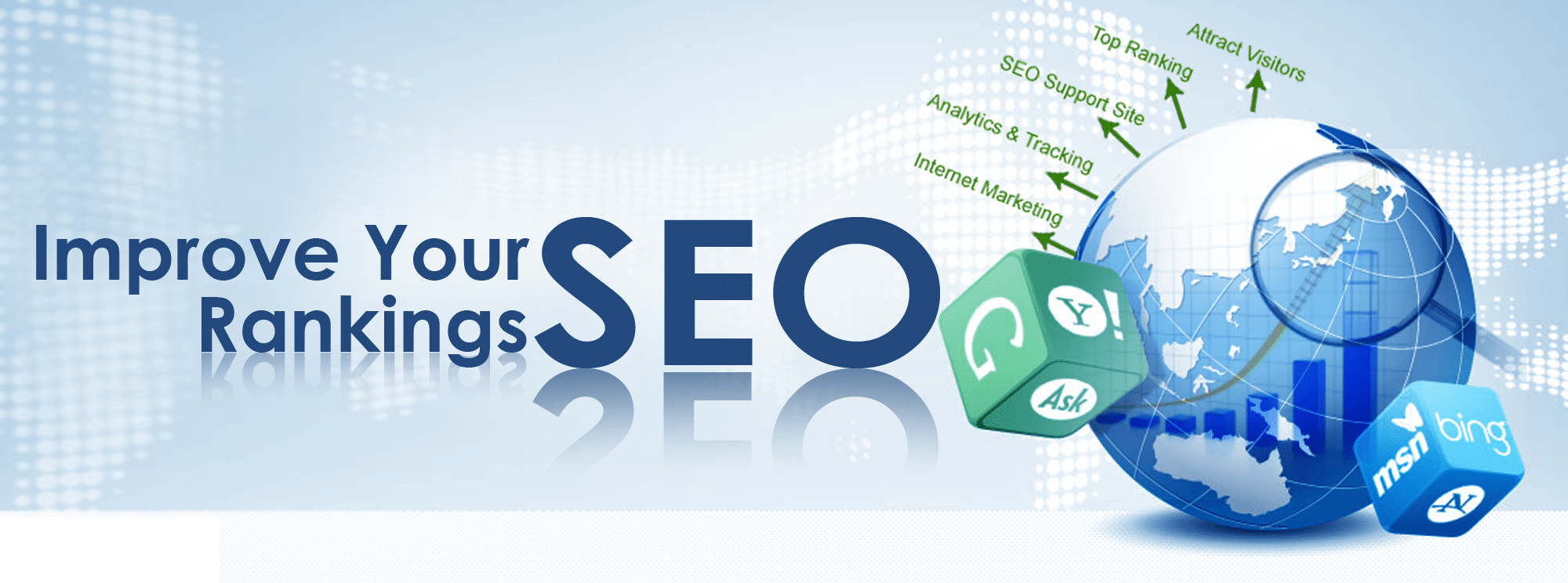On-Site SEO: Mastering the Basics of Search Engine Optimisation

Search engine optimization is the process of making your website easy to find in search results. A website optimized for search engines will benefit from higher rankings and traffic, which can ultimately improve conversion rates and drive more customers to click through to your site. But search engine optimization isn’t just about ranking well in search results—it’s also about creating content that is rich in keyword research and optimizes for search engine guidelines.
In this blog, we discuss search engine optimization (SEO) basics like keyword research and how you can apply them on your website. We’ll also talk about why it’s important to optimize internal linking and why content images are crucial when enhancing search engine visibility.
What is On-Site SEO?
On-site SEO (often referred to as on-page SEO) is a process of optimizing various elements of a website and its pages to improve organic search rankings. It involves making pages easier for search engines to crawl and interpret by adjusting different aspects of the website. It is important for achieving maximum exposure and driving traffic to your website.
Backlinks are one of the most widely used off-page optimization methods. They are links from websites pointing back to your website that are considered as signals of quality and relevance. Generating backlinks is an integral part of on-page seo. This works by creating content that is relevant, unique, and helpful to potential readers. This will enable search engine bots to find and index it easily on the search engine results page (SERP).
Optimise Your Content for Maximum Visibility
– Firstly, it is vital to optimise content for visibility on search engines. This involves tracking keywords across all major search engines, including Google, Bing, and Yahoo. This allows you to ensure that technical optimisations are correctly carried out, such as canonicalisation/301 redirects, robots.txt creation/optimisation, and sitemap creation/optimisation.
-Secondly, it is vital to enhance results in Google SERPs using structured data and the data highlighter. This helps with keyword rankings and visibility on search engine results pages.
– Finally, it is vital to make sure to follow the manual web spam actions imposed by Google. This involves following the guidelines outlined in the URL parameter handling and security issues panel in the Google Search Console.
The importance of keywords in on-site SEO
– Keywords are essential for on-site SEO as they help search engines identify and rank relevant content on your website.
– The more keywords that are present on your website and throughout its content, the higher your website will likely rank in search engine results pages.
– This helps to attract more organic traffic and increase visibility on search engine rankings.
– Additionally, search engines will prioritize content with keywords in its title and heading. This helps to better categorize and index the content.
– Thus, keyword optimization is vital for ensuring that your website is relevant to potential customers and visible to them in the search engine results page. The right keyword selection is also crucial for ensuring that search engines can properly categorize and index the content on your website. This can help to improve rankings and increase visibility of the website in search engine results page.
The use of meta tags in on-site SEO
Meta tags are vital parts of on-site SEO and play an important role in increasing the visibility of a web page in search engine rankings. These tags are used to provide information about a web page such as the page title, description, and keyword phrases. They help search engines identify the content of a page and how it is relevant to search queries. Using meta tags also ensures that search engine crawlers can index web pages more efficiently, resulting in higher rankings in search engine results pages. This helps to improve the visibility of a web page and attract more organic traffic.
However, meta tags cannot be left unnoticed. Depending on their relevance and importance, meta tags may need to be fine-tuned for better optimization. It’s important to use relevant keywords that accurately describe the content of the web page. Also, it’s essential to use descriptive language that is concise and clear to ensure that search engine crawlers can accurately understand the content of the web page.
Make Sure Your Site is Mobile-Friendly
To optimize your website for on-site search engine rankings, it’s essential that you ensure it is mobile-friendly. This means making sure that your website is able to be accessed via a mobile device, such as a smartphone or tablet. This can help improve rankings in search engine rankings for keyword phrases that are relevant to mobile devices.
To do this, you can use tools such as Open Site Explorer to check the metrics of your website, such as domain authority and page authority. These metrics can show how popular your website is among search engine users overall, and can also provide insight on how well- optimized your website is for mobile devices. You can use free local SEO opportunities, such as Google My Business and Bing Places for Business, to optimize your website for mobile-friendliness. This will help improve rankings in search engine rankings for keyword phrases that are relevant to mobile devices. In addition, you can use SEO optimization resources such as Build and Submit a Sitemap and 5 Essential E-Commerce Rich Snippets for Your Store to enhance the visibility of your content on mobile devices.
Keep Your URLs Short and Sweet
– Use keyword-rich titles for your pages. Don’t be afraid to use keywords in your content title as long as it’s relevant and keyword-rich. This will help improve your website’s search ranking and visibility on search engine results pages (SERPs).
– Make sure all the text on your website is keyword-rich. Make sure that the content on your website is relevant to the keyword you’ve chosen, and includes enough keyword usage to attract potential customers. This will help improve your website’s search rankings and visibility on SERPs.
– Use include tags and other meta tags to help your website’s content appear higher on search engine results pages (SERP). Include tags such as <title> and <keywords> in your content to help the search engines identify and index these elements more quickly.
– Use anchor text in your links to create links between specific keywords on your website and the keywords used in the linking content. This can help improve your website’s search rankings and visibility on SERPs.
Monitor Your Site’s Performance Regularly
– Regularly monitor your website’s performance to ensure your on-site SEO is working correctly.
– Update your store frequently to ensure Google visits your website more often.
– Submit your sitemap to Google so it can be indexed and crawled.
– Keep track of customer reviews and respond to them on relevant sites.
– Write effective meta descriptions to optimize your website’s visibility.
By following these simple steps, you can boost your website’s visibility in search engines and improve your organic search rankings.
Utilise Internal Linking to Boost Rankings
Internal linking is an important SEO technique that can help boost rankings of individual webpages by providing relevant links to other relevant pages on the website. In addition, it helps increase the visibility of related pages by linking between them and reinforcing key concepts and phrases.
Anchor text is another important aspect of internal linking. It is the text used to link to a particular page or content on a website and should be relevant to the topic being discussed. While implementing internal linking, it is essential to be mindful of the quality of the links provided and ensure that they are high-quality and relevant to the topic. After all, search engine optimization involves many factors, and one cannot neglect any aspect without affecting its overall performance.
Optimise Images for Better Results
– When it comes to on-site SEO, optimising images is one of the best way to increase website rankings.
– Images are an important part of on-page optimization as they help to draw attention to a product or service. So by optimising your images, you can effectively improve on-page rankings and boost conversions.
– To start with, you should check if your image files are optimized for on-page SEO. This means making sure the image file size is ideal for the content and also ensuring that the image has no unnecessary elements, such as flash or watermarks.
– Also, consider using descriptive file names, captions and alt text when possible for images on your website. This will help provide additional context and description for your content, which can improve search engine ranking and overall visibility.
– Finally, ensure that you select relevant images for each webpage. This way you can ensure that your content is well-represented on the internet and gets exposure worldwide.
What are the benefits of on-site SEO?
– On-site SEO is a systematic approach to improving the visibility of a website in search engine results.
– It involves creating and implementing clear digital marketing plans for website content, design and technical optimization.
– On-site SEO can help create a holistic SEO strategy that balances on-page and off-page factors to create a high-quality website that ranks well in search engine results.
– It includes keyword research, keyword optimization, content creation and management, keyword tracking, analytical keyword research, backlink analysis and building trust relationships with search engine authorities.
– Outreaching to get backlinks can help increase the website’s popularity and rank better in search engine results.
– It also helps create an inclusive digital environment that attracts loyal audience and enhances brand awareness.
– As you can see, on-site SEO is an essential part of digital marketing.
How long does it take to achieve good results with on-site SEO?
-It takes 5.66 times as much work to achieve good results with on-site SEO than paid outbound marketing.
-For that, you need to invest in keyword research and optimization, content marketing, and social media marketing.
-A structured approach to conversion can improve sales.
-Increased organic presence leads to more traffic and more leads.
-A fresh audit of your website’s pages will help you determine the areas where you need improvement.
-An annual audit helps in keeping track of your website’s health, identify any issues, and make necessary changes.
The time taken depends on various factors like the website size, niche, and other factors involved in on-site SEO. A fresh audit is essential for getting an accurate picture of the current state of on-site optimization for a website.
Things to avoid while optimizing a website for search engines
You must follow certain steps and guidelines to ensure that your website is optimized for search engine rankings. Avoid looking at test results during a test. Instead, focus on improving the content of your website. This will help improve its rankings on search engine results pages (SERPs).
Evaluate the keywords you have used on your website and see if they are relevant and useful to users. This will help increase your website’s rankings in search engine result pages (SERP).
Avoid using unethical SEO techniques such as black hat tactics or spamming the search engines. These techniques can harm your website’s rankings and lead to penalties from search engine algorithms.
Avoid creating duplicate content on a website. This can ruin your rankings and damage the visibility of your website in search engines.
Avoid providing misleading information on citations. This could cause a penalty from search engine algorithms for providing false information about content on the web page.
Finally, make sure that the image alt tags are properly marked on images used on your websites. Avoiding these mistakes can help improve the visibility of your website on SERPs
Frequently Asked Questions
There are many factors of technical SEO, but the main ones include:
– Ensuring on-site SEO elements (such as titles, meta descriptions, and backlinks) are properly optimized for search engine visibility
– Obtaining and submitting a sitemap to Google for better indexing and crawling
– Writing compelling and relevant meta descriptions that accurately describe the content on a website page
These are just a few of the many ways in which technical SEO can help improve website visibility and traffic. Keep in mind that it’s important to always do your research and consult with an experienced professional before making any changes to your website’s marketing strategy.
A SEO audit is an important step in website optimization. It’s a process of identifying any errors or issues with the website and its content, as well as submitting a sitemap to Google (which will ensure it is indexed and crawled) and implementing an outreach strategy to increase website traffic.
To do a good SEO audit, you’ll need to:
1. Identify any errors or issues with the website content: This includes checking for keyword density, pagination, keyword selection, etc.
2. Submit a sitemap to Google: A sitemap ensures that Google knows the website exists and can crawl its pages more easily.
3. Utilize rich snippets for product rating, price, and other information: Including these snippets on Google search results page may improve visibility and rankings for your website.
4. Implement an outreach strategy: Send out email newsletters or social media posts specifically targeting keywords relevant to your website content. This will help to increase website traffic organically.
5. Improve meta descriptions for all website pages: A well-written meta description can help to generate clicks from search engine results pages, which in turn can result in increased website traffic.
On-site SEO is the practice of optimizing a website and its pages to improve search engine rankings. This involves adjusting the content and structure of a website so that search engines can crawl and interpret it.
Some of the most common on-site SEO techniques include optimizing content, meta tags, and headings. Technical elements like sitemaps must also be optimized and submitted to Google for indexing in order to have your website rank higher in search engine results pages.
Keeping your website fresh and distributing new or revised content on a regular basis is also vital for improving search engine rankings. All in all, on-site SEO is a complex but essential process that can help boost traffic and revenue for your business online.
There are many benefits of on-site SEO, including improving organic search rankings and driving traffic to your website. By optimising elements on your website and its pages, you can make sure that search engines will include your store in their results pages. In addition, submitting a sitemap to Google is essential for indexing and crawling your site, as it will help Google locate all the pages on your website.
Additionally, using free directories like Google My Business and Bing Places for Business can help you reach a wider audience and build links back to your site. By promoting your business on these directories, you’re also increasing your chances of getting featured on search engine results pages.
SEO (Search Engine Optimization) involves implementing tasks like header tag optimization, Alt attribute optimization, image compression, CSS, JS file caching and minification, internal links and anchor text optimization, correction of faulty code, broken links and 404 errors, meta titles, descriptions, and rationalization of plugins. Additionally, backlink analysis and international ahref tags should also be implemented.
There is no one-size-fits-all answer to this question, as the best SEO strategy depends on the brand and international market that you are targeting. However, some general tips that may be helpful for brands are as follows:
1. Monitor and respond to reviews on local sites such as Google My Business, Tripadvisor, and Facebook. This will help you gather valuable feedback about your business and improve customer service.
2. Use keyword and SEO tools to attract traffic to your website from search engines. This can help your website rank higher in search engine results pages (SERPs) and boost your online presence.
3. Optimize elements on your website such as content and structure in order to improve search engine rankings. This will help potential customers find you more easily and increase your website’s visibility.
4. Monitor and adjust SEO strategy on a regular basis to fit changing trends on the web. By doing so, you can stay ahead of the competition and ensure that your brand is seen by potential customers in the best possible light
Conclusion
On-site search engine optimization is the process of optimising your website to improve rankings on search engine results pages (SERPs). It involves creating high-quality content that is keyword-optimized and structuring it in a way that makes it easy for search engines to find and index. To achieve this, you first need to create relevant and keyword-focused content. When creating content, keep keyword research and search engine rankings in mind. Besides creating original, high-quality content, you can also use internal links to boost rankings and rankings on search engine results pages. A well-maintained website with well-written, keyword- optimized content is a sure way to rank higher in search engine results.
Recommended Posts

How Digital Marketing is Useful for Doctors?
April 5, 2024

The Different Types of Digital Marketing Channels
December 23, 2023

How to Make Your Website SEO-Friendly
February 7, 2023

